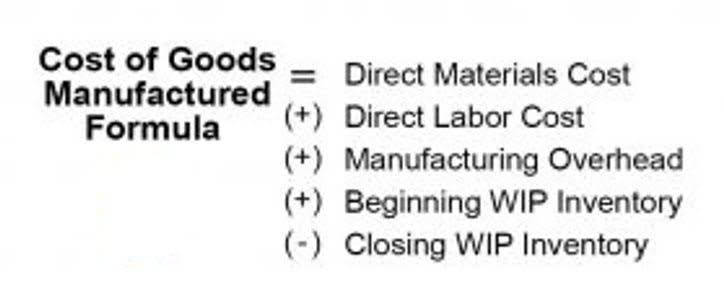Content

In the next tutorial, we’ll look at the income summary account in more detail. If your expenses for December had exceeded your revenue, you would have a net loss. When closing expenses, you should list them individually as they appear in the trial balance.

If the balance in Income Summary before closing is a credit balance, you will debit Income Summary and credit Retained Earnings in the closing entry. First, transfer the $5,000 in your revenue account to your income summary account. Whether you credit or debit your income summary account will depend on whether your revenue is more than your expenses. Because expenses are decreased by credits, you must credit the account and debit the income summary account. Create closing entries to reflect when your accounting period ends. For example, if your accounting periods last one month, use month-end closing entries.
15 Closing Entries
In turn, the net balance of all temporary accounts will be transferred from the income summary account to retained earnings which is a permanent account listed on the balance sheet. From the income summary account, the net balance of the temporary accounts will be transferred to retained earnings, a permanent account that is listed on the balance sheet. To close the income summary account to the retained earnings account, Bob needs to debit the retained earnings and credit the income summary. This is contrary to what is normally done, as Bob has made a net loss for the period.

This transaction increases your capital account and zeros out the income summary account. Since we credited income summary in Step 1 for $5,300 and debited income summary for $5,050 in Step 2, the balance in the income summary account is now a credit of $250.
When you compare the retained earnings ledger (T-account) to the statement of retained earnings, the figures must match. It is important to understand retained earnings isnotclosed out, it is only updated. Retained Earnings is the only account that appears in the closing entries that does not close.
Accounting software automatically handles closing entries for you. If you do not have accounting software, you must manually create closing entries each accounting period.
Step 1: Close Revenue Accounts
Each revenue account is closed with a debit to each account and the sum is credited to the income summary. Having a zero balance in these accounts is important so a company can compare performance across periods, particularly with income. It also helps the company keep thorough records of account balances affecting retained earnings.
- Printing Plus has a $4,665 credit balance in its Income Summary account before closing, so it will debit Income Summary and credit Retained Earnings.
- This is no different from what will happen to a company at the end of an accounting period.
- To make the balance zero, debit the revenue account and credit the Income Summary account.
- This can be a beneficial process for companies that are established and have high earnings.
- Temporary AccountTemporary accounts are nominal accounts that start with zero balance at the beginning of the financial year.
- Since dividend and withdrawal accounts are not income statement accounts, they do not typically use the income summary account.
We see from the adjusted trial balance that our revenue account has a credit balance. To make the balance zero, debit the revenue account and credit the Income Summary account. Other accounting software, such as Oracle’s PeopleSoft™, post closing entries to a special accounting period that keeps them separate from all of the other entries. So, even though the process today is slightly different than it was in the days of manual paper systems, the basic process is still important to understand. After preparing the closing entries above, Service Revenue will now be zero. The expense accounts and withdrawal account will now also be zero. The amounts on the temporary accounts on the income statement are moved into the permanent accounts on the balance sheet.
How To Close An Expense Account
Finally, if a dividend was paid out, the balance is transferred from the dividends account to retained earnings. Any account listed on the balance sheet, barring paid dividends, is a permanent account.
The Business Consulting Company, which closes its accounts at the end of the year, provides you the following adjusted trial balance at December 31, 2015. In order to understand this, you need to know the difference between permanent and temporary accounts. DebitCreditCash10,000Accounts Receivable25,000Interest Receivable600Supplies1,500Prepaid Insurance2,200Trucks40,000Accum. All accounts provided on the balance sheet, with the exception of dividends, is permanent.
Once this closing entry is made, the revenue account balance will be zero and the account will be ready to accumulate revenue at the beginning of the next accounting period. During the process of performing Closing Entries, a company’s net income is transferred to retained earnings which will be listed on the balance sheet.
What Are The 4 Closing Entries?
Retained earnings are those earnings not distributed to shareholders as dividends, but retained for further investment, often in advertising, sales, production, and equipment. Rosemary Carlson is an expert in finance who writes for The Balance Small Business. She has consulted with many small businesses in all areas of finance. She was a university professor of finance and has written extensively in this area. K.A. Francis is a freelance writer with over 20 years experience, and a small business consultant and jewelry designer. She holds a Bachelor of Arts in English and business administration and a Master of Arts in Adult Education.
- By doing so, the company moves these balances into permanent accounts on the balance sheet.
- Revenues and expenses are transferred to the Income Summary account, the balance of which clearly shows the firm’s income for the period.
- During the closing entries process, an accountant would close revenue and close expenses by transferring those balances to permanent accounts.
- Income SummaryAn income summary is a transitory account created to transfer all the expenses and revenue accounts at the end of the accounting period.
- First, all revenue accounts are transferred to income summary.
- This will ensure that the balances of those expenses account are transferred to the income summary account.
- We could do this, but by having the Income Summary account, you get a balance for net income a second time.
Therefore, this entry will ensure that the balance has been transferred on the balance sheet. As mentioned earlier, this is just an intermediate account that is used to zero out all the other revenues and expenses accounts into one place. The balances of the income summary account will eventually also be transferred to the retained earnings account on the balance sheet. It is also possible to bypass the income summary account and simply shift the balances in all temporary accounts directly into the retained earnings account at the end of the accounting period. The income summary is used to transfer the balances of temporary accounts to retained earnings, which is a permanent account on the balance sheet.
Close Dividend Accounts
You should recall from your previous material that retained earnings are the earnings retained by the company over time—not cash flow but earnings. Now that we have closed the temporary accounts, let’s review what the post-closing ledger (T-accounts) looks like for Printing Plus. To further clarify this concept, balances are closed to assure all revenues and expenses are recorded in the proper period and then start over the following period. The revenue and expense accounts should start at zero each period, because we are measuring how much revenue is earned and expenses incurred during the period. However, the cash balances, as well as the other balance sheet accounts, are carried over from the end of a current period to the beginning of the next period.
Therefore, it will not appear on any trial balances, including the adjusted trial balance, and will not appear on any of the financial statements. Transferring funds from temporary to permanent accounts also updates your small business retained earnings account. You can report retained earnings either on your balance sheet or income statement. Without transferring funds, your financial statements will be inaccurate. Being able to record a company’s closing entry helps these financial professionals clear a temporary account and prepare for the new accounting cycle.
The income summary account is only used in closing process accounting. Basically, the income summary account is the amount of your revenues minus expenses.
The longer process requires temporary accounts to be closed in an intermediate income summary account first and then that account is zeroed out to the retained earnings. The result in both cases is the same and depends on the bookkeeper’s preference or company’s policy on it. Close the owner’s drawing account to the owner’s capital account. In corporations, this entry closes any dividend accounts to the retained earnings account.
Note that the income summary account is not absolutely necessary – the revenue and expense accounts could be closed directly to retained earnings. The income summary account offers the benefit of indicating the net balance between revenue and expenses (i.e. net income) during https://www.bookstime.com/ the closing process. © Rice University OpenStaxCC BY-NC-SA Long DescriptionThe first entry requires revenue accounts close to the Income Summary account. To get a zero balance in a revenue account, the entry will show a debit to revenues and a credit to Income Summary.
Temporary accounts are accounts in the general ledger that are used to accumulate transactions over a single accounting period. The balances of these accounts are eventually used to construct the income statement at the end of the fiscal year.
Related Books
Save money without sacrificing features you need for your business. Permanent accounts are those that keep track of the long-term assets, liabilities, and equity of a business. Mary Girsch-Bock is the expert on accounting software and payroll software for The Ascent.
Net Income Or Net LossNet loss or net operating loss refers to the excess of the expenses incurred over the income generated in a given accounting period. It is evaluated as the difference between revenues and expenses and recorded as a liability in the balance sheet. As part of the closing entry process, the net income is moved into retained earnings on the balance sheet. The assumption is that all income from the company in one year is held onto for future use.
This is done through a journal entry debiting all revenue accounts and crediting income summary. Owner’s Capital8,400If expenses were greater than revenue, we would have net loss. A net loss would decrease owner’s capital, so we would do the opposite in this journal entry by debiting the capital account and crediting Income Summary.
Now that the income summary account is closed, you can close your dividend account directly with your retained earnings account. Understanding closing entries is important because it helps accountants evaluate a company’s financial performance for the fiscal year. During this process, accountants can ensure credits and debits match. This balance is important since it tells accountants whether an account is healthy and can help identify errors in double-entry accounting. Accountants use closing entries to update the owner’s capital account and match the ending capital balance with the statement of owner’s equity. The income summary account is a type of temporary account used as an intermediary for transferring the temporary account balances to the retained earnings account. Some common examples of closing entries include the closing of revenue accounts, expense accounts, and dividend accounts.
This process is used to reset the balance of these temporary accounts to zero for the next accounting period. This is no different from what will happen to a company at the end of an accounting period.
The next and final step in the accounting cycle is to prepare one last post-closing trial balance. The transfer of all revenue accounts into the income summary- this entails a debit on revenue accounts and a credit on the income summary.